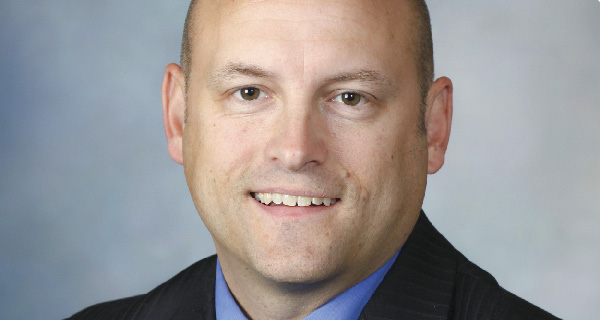Matthew Wood: Finding a Cure for High Freight Costs

Matthew Wood is manager of the freight program, supply chain management, at Mayo Clinic in Rochester, Minn. He has held this position since 2012.
Responsibilities: Managing freight expenditures for all items purchased by organizations within Mayo Clinic; helping departments find ways to reduce their freight costs; marketing those services to other healthcare organizations.
Experience: More than 17 years in freight as a customer service representative, sales representative, BAX Global; cargo sales, manager of cargo operations for Minneapolis-St. Paul, regional manager, vendor operations, Northwest Airlines Cargo; regional manager, cargo operations, Delta Air Lines.
As a kid, I wanted to grow up to be an airline pilot. In pursuing an airline career, I went to work in air cargo, first in customer service, then in sales, and finally in operations. Now that I’m working in healthcare, I see a lot of parallels to the airline industry.
Airlines had to make big operational changes to stay in business. Healthcare organizations face similar challenges today. With healthcare reform in progress, these organizations are looking at every expense to find ways to save money. That’s where my team and I come in.
Our primary job is managing Mayo Clinic’s freight spend. Before our group started providing analytics, departments had limited visibility into shipping costs for the products they ordered. A department might spend 80 percent of its transportation dollars on overnight service, then leave those shipments sitting on the dock for two days.
Some end users tell suppliers, “Just overnight it,” not knowing what costs that entails and what repercussions it can bring. Once they see those freight expenses hitting their department budgets, they usually reach out to us for help.
Educating departments about freight expenses is my biggest challenge. When they buy a big piece of capital equipment and the supplier quotes transportation at $4,000, that’s peanuts on a multi-million-dollar invoice. But transportation doesn’t need to cost $4,000; it could cost $2,000 instead. Repeating transactions such as this can add up to millions of dollars in annual savings.
Freight represents less than five percent of Mayo Clinic’s total supply chain spend. The challenge is persuading end users that reducing some of their freight spend by picking the right service for the need can drive big changes within the organization. Transportation might be small on the radar, but it can have a big effect on overall expenses.
In addition to working with purchasers internally, we’ve also told our suppliers they can no longer add the cost of freight to invoices. Instead, they use our inbound FedEx account number, which allows us to approach FedEx with a much larger spend, to drive bigger discounts. Because we’re getting freight at a discounted price, and not letting suppliers apply a markup, we can better predict and manage our costs. For Mayo Clinic, this has reduced freight spend by about 25 percent—and that’s huge when you’re spending millions.
Now that Mayo Clinic has developed a robust inbound logistics program, we’ve started a venture to help other healthcare organizations apply what we’ve learned. In November 2012, Novation, a healthcare group purchasing organization, awarded us a contract to sell an inbound freight program to its members. We’re trying to get the word out that what Mayo Clinic started doing back in 2008 to control freight spend, they can do as well.
With the help of a back-end auditor, we provide visibility and analytics for the member’s freight spend, so they can go to their departments the way we did and show them how to control freight costs. In addition, organizations in this program get industry-leading discounts that we’ve negotiated with FedEx to help them gain the savings we all need for our freight.
The Big Questions
What was your first job?
My first job with a real paycheck was working at a day care center.
What career accomplishment are you particularly proud of?
As part of the Delta Air Lines and Northwest Airlines merger, I helped lead a team that merged two separate cargo operations into one.
Do you have a hidden talent?
I’m a pilot: I have my multi-engine commercial instrument rating. But given the cost of fuel, and the fact that I have two young daughters, I’ve put that talent on hiatus for a while.
What movie could you watch over and over?
A Few Good Men.
